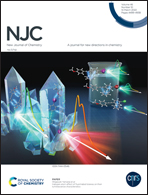Controlled aggregation properties of single amino acids modified with protecting groups†
Abstract
The self-assembly of modified single amino acids has gained substantial attention due to their ease of synthesis, biocompatibility and ability to assemble into distinct structures which can potentially be used for a wide range of applications. Herein, we report the self-assembly of modified single amino acids, i.e. charged aliphatic and aromatic amino acids, which are functionalized with different protecting groups such as 9-fluorenylmethoxycarbonyl (Fmoc), tert-butyloxycarbonyl (Boc), N-carboxybenzyl (Cbz) and tert-butyl (tBu) into distinct structures. The self-assembled structures formed by these modified charged aliphatic and aromatic single amino acids were very interesting and distinct, and also showed the propensity of controlled morphological transitions at varying concentrations and temperatures. The modified single amino acids self-assembled into different well-defined morphologies such as spheres, flowers, fibers, rods and unusual broom-like structures as characterized by various microscopic techniques. The solution state 1H-NMR, ATR-FTIR studies and control experiments with tannic acid further provided useful insights into the role of intermolecular interactions which governs the process of self-assembly and implicates the crucial role of pi–pi stacking and hydrogen bonding in structure formation.



 Please wait while we load your content...
Please wait while we load your content...